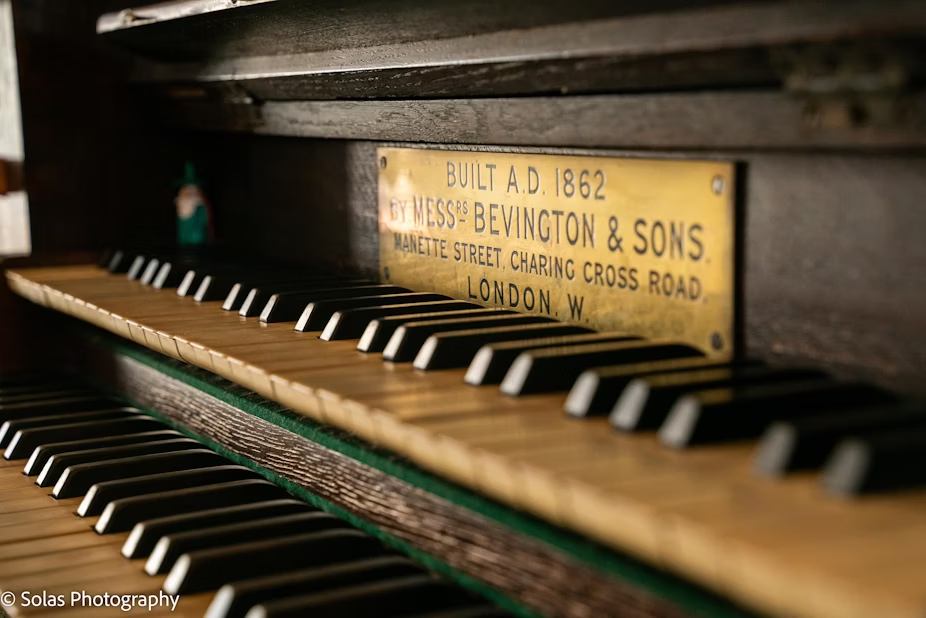Church Organ
St Paul's gained its first organ in 1726, 88 years after the church was consecrated.
In 1720, St Paul's decided to buy an organ with donations from parishioners, and proclaimed that “any Inhabitant. . . may Apply to any of their friends who are Organ Makers to bring in Proposals”. Proposals were received from five organ-builders:
(John) Knoppell, Mr. Harris (presumably one of the sons of master organ maker Renatus Harris), Mr. Gerard Smith, Mr. Christian Smith (presumably nephews of master organ maker Bernard Smith/Schmidt), and Christopher Schrider.
Selection was to be by the majority vote of subscribers, who had one vote for each guinea contributed. However, objection was made to some of the proposals and the matter lapsed until 1726 when an organ (15 by 16 feet on plan) and two small galleries for charity-school children were erected at the west end.
The organ was the work of the English organ-builder, Abraham Jordan.
The first organist was John Travers who was elected in November 1726 on the recommendation of the Third Duke of Bedford “and severall other Persons of distinction”. His salary was £30 per annum.
The organ was repaired by 'Mr [William] Bailey Send & Co.' in 1763.
In 1795 there was a dreadful and destructive fire which started in the church roof. In October 1795 Thomas Hardwick (1752-1829) was appointed surveyor to the parish and produced a restoration estimate of £10,300, plus the cost of a new organ.
The choice of organ builder was referred by the vestry to the joint organists of the parish, and J. W. Callcott recommended either John Avery or William Gray. The latter was chosen, and subsequently retained to tune the organ at 8 guineas per annum.
The total cost of the instrument, for which Hardwick designed the case, was £577 10s.
By 1861 the organist could 'manage to get through' the Sunday services, but with much difficulty owing to the 'tottering state of the Mechanism'. In that year the Duke of Bedford paid for a three manual instrument by Henry Bevington, which incorporated part of the case, and possibly pipes and other pieces, of the Gray organ.
The Bevington organ was completely dismantled and restored, with the addition of a bottom octave for the Swell organ, thus completing its compass, by N. P. Mander, Limited, in 1967.

